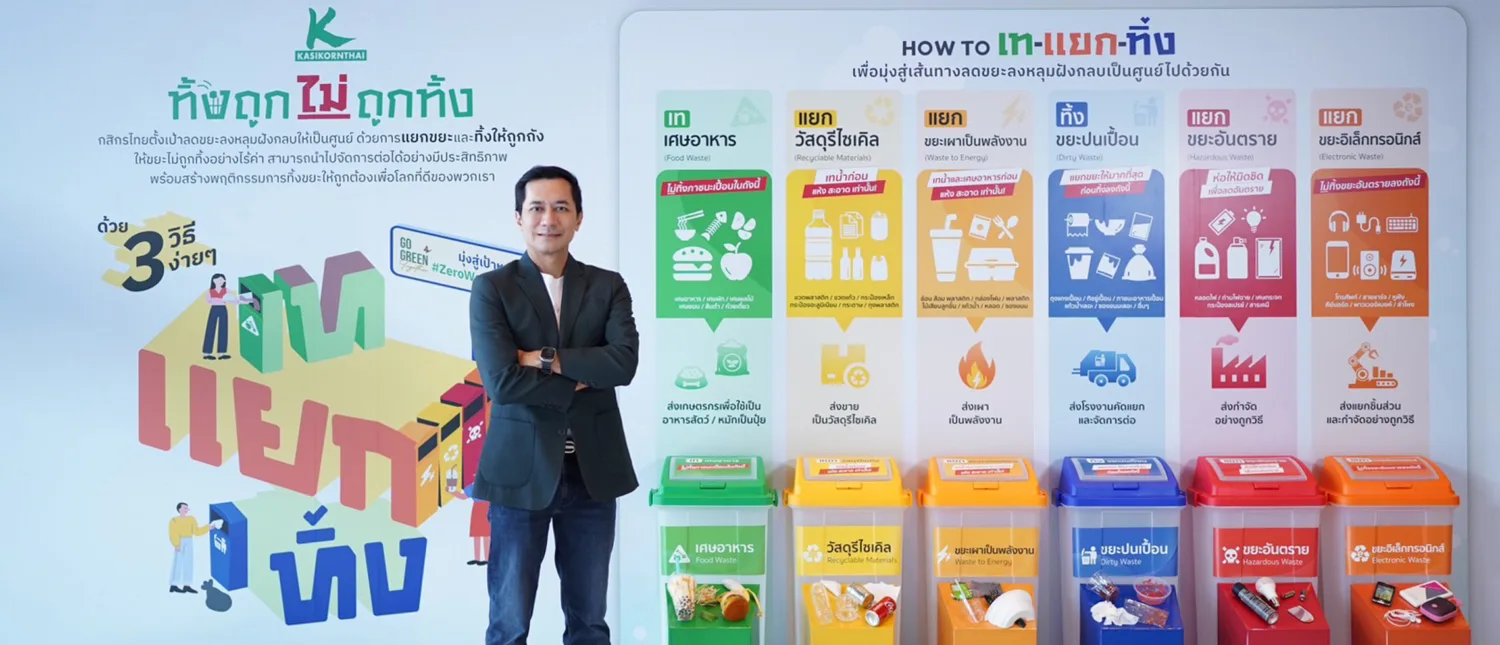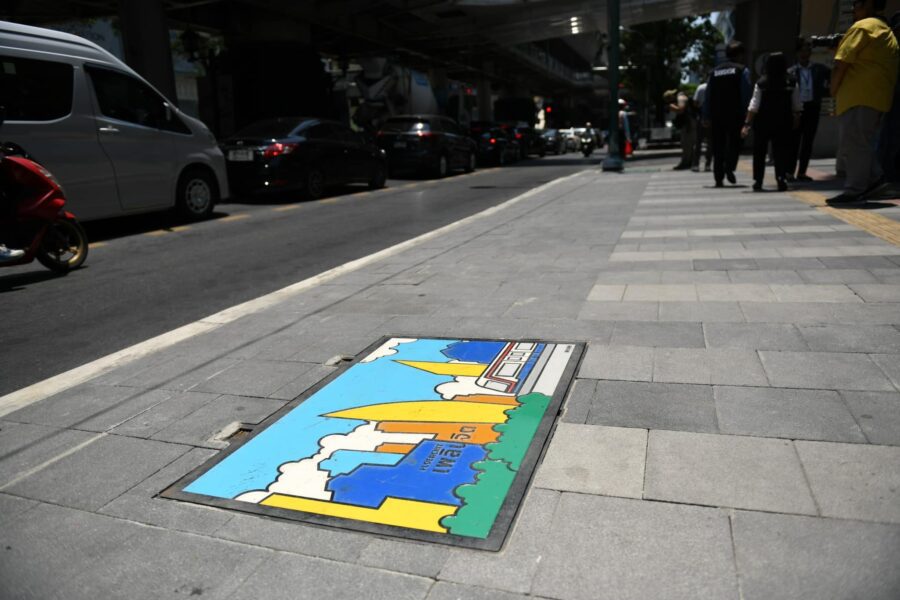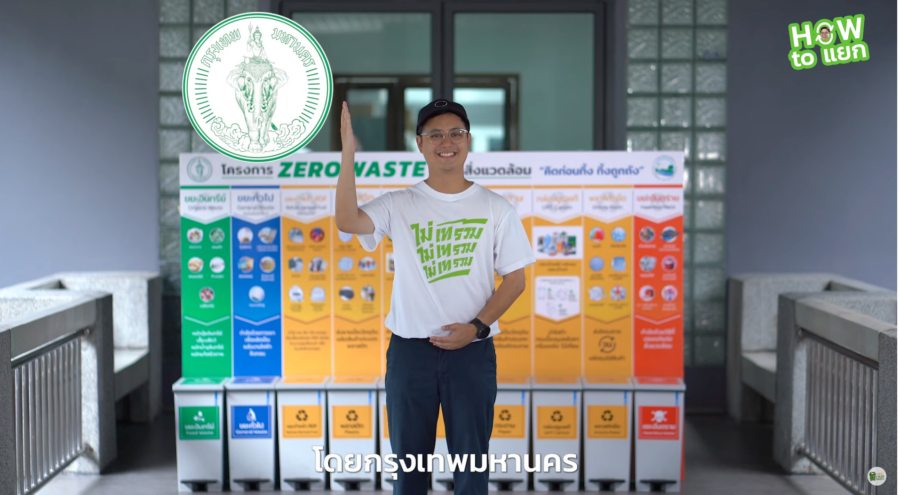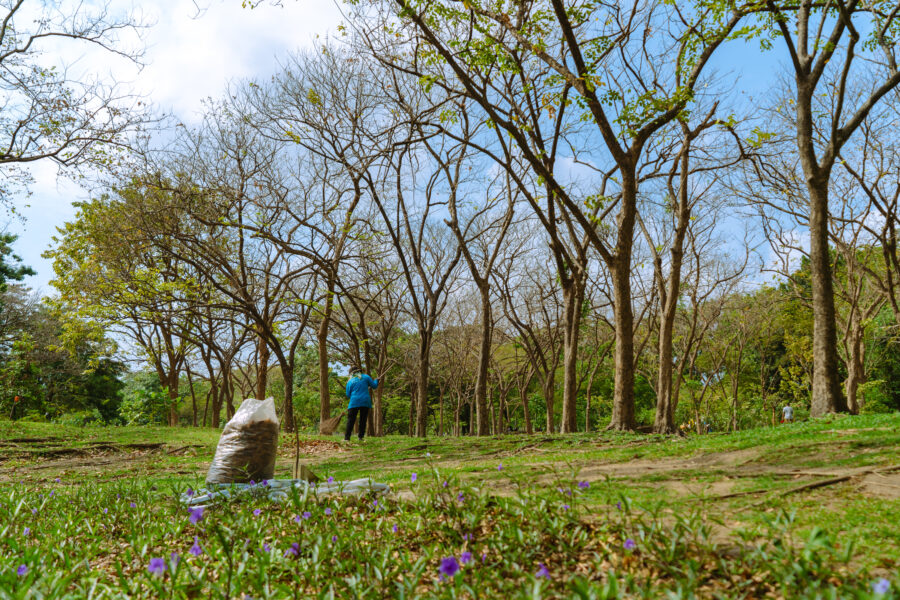By Natthanon Nakkhong
Nowadays, we hear a lot about the overflowing garbage in the city and various policies are trying to reduce the garbage, but the garbage does not show any signs of running out. This garbage, from production to disposal, contributes to the release of greenhouse gases at every step. It is one of the variables that affects the problem of Climate Change that we must urgently deal with.
One of those who saw the importance of this problem was Kasikorn Bank, which changed various systems within its office building to accommodate the current problem situation, with “waste management” as a component to success. But by what method and what are the results? This is something we have to learn.

“Garbage” is an urgent matter that needs to be managed.
The urgency of Climate Change has been Kasikornbank's awareness since 2021 and with its commitment to Net Zero Greenhouse Gas Emissions (Net Zero Commitment), it has continuously made changes within the organization, such as using solar power, using electric vehicles, using oil mixed with biofuel, etc. But another important mission that is also linked to Climate Change is: Waste management from banking business activities
Especially in the 4 main buildings, namely Phaholyothin Head Office, Rat Burana Building, Chaeng Watthana Building and KBTG Building, which have approximately 8,000 rotating employees, the ultimate goal is to achieve zero waste from buildings to landfills (Zero Waste to Landfill) by 2023.
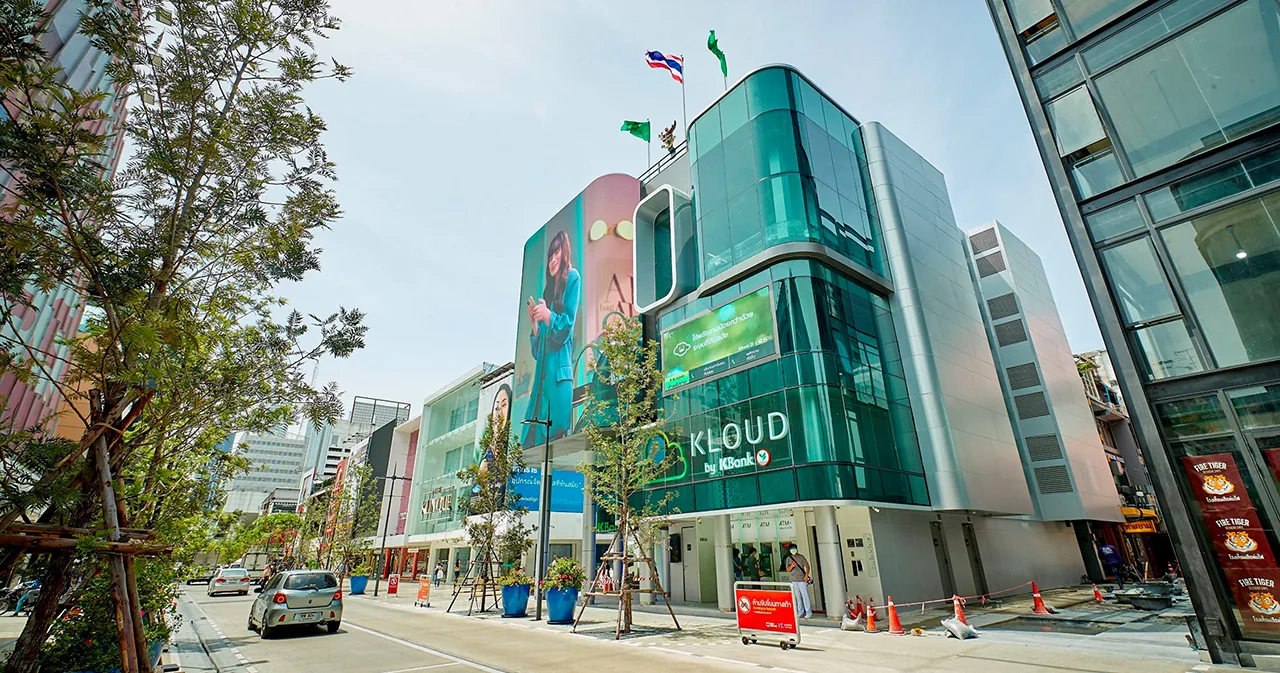
Developing green building prototypes
To pioneer waste management in Kasikornbank's main building in 2022, Kasikornbank has developed a green building prototype called 'KLOUD by KBank', an innovative iconic green building in Siam Square, as a prototype area for energy use, environmental friendliness, and importantly, a comprehensive waste management system for every piece in the building.
By using the innovation of a comprehensive plastic waste management system on the 'YOUturn' platform from PTT Global Chemical Public Company Limited, covering everything from the waste sorting system at the source, including a food waste shredder to turn it into organic fertilizer, a plastic bottle return box, and a system for receiving, collecting, and recycling waste to Upcycling into new products that can create added value.
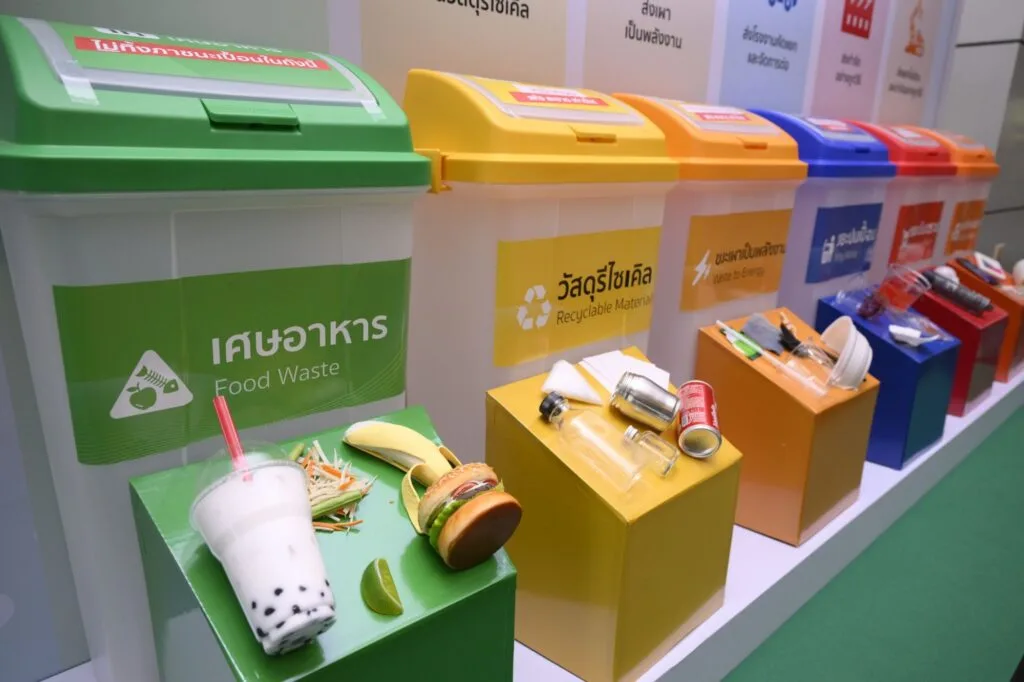
Changing buildings to reduce landfill waste
From the firm goal of reducing waste to zero landfill, it has led to the installation of more than 6 types of trash cans in 4 main office buildings to separate 6 types of waste: food waste, recyclable materials, waste to be burned for energy, contaminated waste, hazardous waste, and electronic waste, along with setting up a waste management system for each bin efficiently and appropriately according to the Zero Waste principle from the beginning to the final destination in order to reduce waste to landfill and ultimately reach zero.
Along with providing correct knowledge to employees to make them aware of its importance and encourage them to put it into practice through the campaign “Throw it awaynoAbandoned"With 3 easy steps: Pour-Separate-Dispose, it invites employees to change their behavior in separating waste before throwing it away, in order to create the correct behavior of throwing it away, so that waste is not thrown away worthlessly and can be managed effectively.
Move towards success
In the past, in 2021, Kasikornbank had more than 5,494.61 tons of waste. However, after piloting the systematic waste management, in 2022, the amount of waste was reduced to 4,918.38 tons, or 10.49 percent. 1,504.82 tons were recycled and 3,413.58 tons had to be landfilled. The combined results of all Kasikornbank projects helped reduce greenhouse gas emissions by 16.75 percent.
By the end of the target in 2023, Kasikorn Bank had reduced the amount of waste by another 4,166.97 tons, or a 15.28 percent reduction, with 1,879.22 tons of waste being recycled, some of which was from recycling unused paper into pulp and reusing it, resulting in 1,751 tons, which helped reduce the cutting down of 29,767 trees. In the end, the amount of waste that had to be buried was reduced to only 2,287.75 tons.
Although it has not yet achieved zero waste to landfill as planned, Kasikornbank has proven a significant reduction in the amount of waste, which shows the efficiency of waste management within the office building. This is a good milestone for all employees, including Kasikornbank, to continue to achieve the original goal to move towards zero waste management from the building to landfill (Zero Waste to Landfill) in the end.
Waste Management Lessons from Kasikorn Bank
- Setting goals is an inspiration that helps Kasikorn Thai have a clear direction, not get lost, and will lead to the set goals effectively.
- Waste management to achieve the desired results, just having a trash can is not enough, but we must also change our behavior in disposing of waste correctly.
- The world is getting worse. It's time to change. Start simply by managing your waste properly.
Reference list
- Kasikorn Bank. (2023). Kasikorn Thai moves forward to transform its main building into a Zero Waste to Landfill. Retrieved from https://www.kasikornbank.com/th/news/pages/zerowaste.aspx
- Sustainability Development Report 2022. Retrieved from https://www.kasikornbank.com/th/sustainable-development/SDAnnualReports/Y2022_SD_TH.pdf
- Sustainability Development Report 2023. Retrieved from https://www.kasikornbank.com/th/sustainable-development/SDAnnualReports/y2023-sd-th.pdf
- THE STANDARD TEAM. (2023). Explore KLOUD by KBank, a 'green' building prototype under the concept 'createYOURNiVERSE'. Retrieved from https://thestandard.co/kloud-by-kbank/






